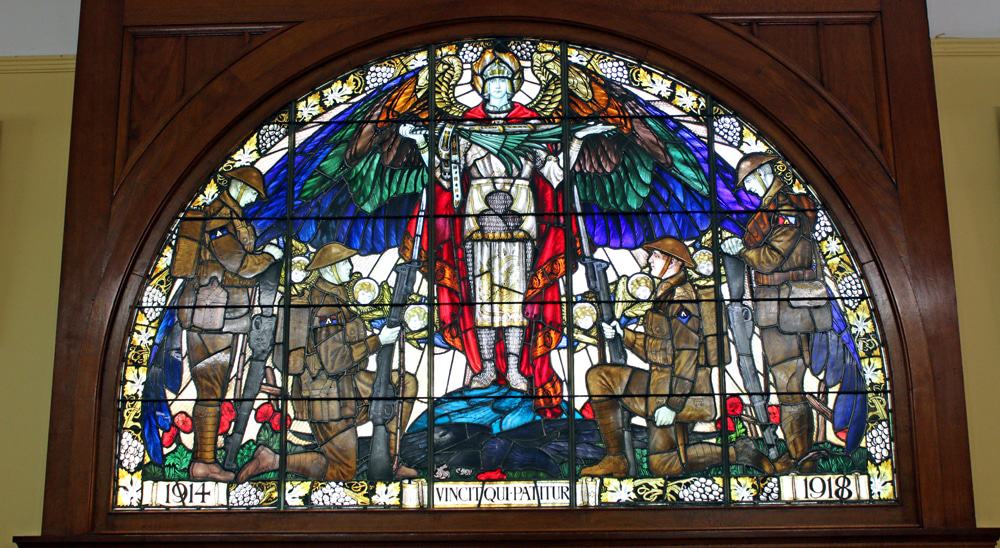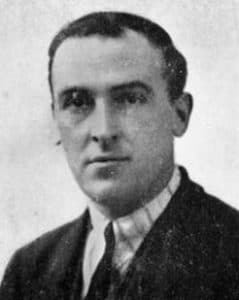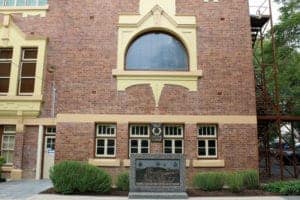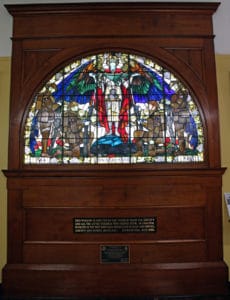
 As the Ipswich community prepares to observe Remembrance Day on Saturday, Ipswich First takes a look at a unique tribute housed in one of the city’s most iconic buildings.
As the Ipswich community prepares to observe Remembrance Day on Saturday, Ipswich First takes a look at a unique tribute housed in one of the city’s most iconic buildings.
It’s not easy to spot at first glance. From the outside its majesty is all but hidden.
Take a closer look though, from the inside, and it becomes clear Memorial Hall in Nicholas Street is in fact home to one of the most impressive stained-glass windows in Queensland.
Positioned on the second floor, Memorial Window has stood the test of time since it was unveiled on 30 November 1922.
It was designed by renowned painter and stained-glass window artist William Bustard with money for the window raised by Elizabeth Cameron and women of the Ipswich Train Tea Society.
The Train Tea Society was renowned for meeting trains – at all hours of the day and night – that stopped in Ipswich while transporting returned servicemen to Brisbane.
They served free tea and refreshments to the men who were continuing their journey.
What the window depicts
RSL sub-branch museum administrator Mick Corkery said the window paid tribute to the four major units raised in Ipswich during World War I.
It shows St Michael as the Angel of Victory and patron of soldiers with outspread wings embracing four soldiers representing the 9th, 15th and 26th Battalions and the 5th Light Horse.
St Michael is standing on top of the world with a defeated German eagle laying beneath. His hands hold a sheathed sword, representing peace, and a Palm of Victory.
The field of Flanders is shown in the background with scarlet poppies and crosses and there is a band of cherubs. All this is encompassed in a border of grape vine symbolising eternal life.
The start and finish dates of World War I are included at the base of the window along with the inscription vincit qui patitur meaning ‘he who is patient, conquers’.
Despite being unveiled at Memorial Hall in 1922, the window did spend several years at North Ipswich in the RSL services club dining room before it was eventually refurbished and returned to Memorial Hall in 2006.
Ipswich RSL sub-branch operates a museum at Memorial Hall, open on the last Sunday of the month (except December) from 8.30am to noon. Admission is free. Memorial Hall is at 63 Nicholas Street, Ipswich.

William Bustard was a painter, stained glass artist and book illustrator who hailed from Terrington in Yorkshire, England.
He learned his stained glass techniques under James Powell in London and worked in cathedrals in England, Ireland and the USA.
Bustard enlisted in the Royal Army Medical Corp during World War I and served in Greece and Italy.
After the war, in 1921, he and wife Lily Whitmore migrated to Queensland.
In Queensland he taught art, becoming a life member of the Royal Queensland Art Society and a foundation member of the board of trustees of the Queensland Art Gallery.
His stained glass work features in many heritage-listed buildings including St John’s Church of England Cathedral, City Hall in Brisbane, Ann Street Presbyterian Church and Catholic Star of the Sea Cathedral in Darwin.
Bustard was said to have been a “kindly, jovial Bohemian with a touch of the larrikin at times” and was respected as a “fluent painter”.
He died on 24 August, 1973 at Labrador, aged 79.

 As the Ipswich community prepares to observe Remembrance Day on Saturday, Ipswich First takes a look at a unique tribute housed in one of the city’s most iconic buildings.
As the Ipswich community prepares to observe Remembrance Day on Saturday, Ipswich First takes a look at a unique tribute housed in one of the city’s most iconic buildings.

5
3